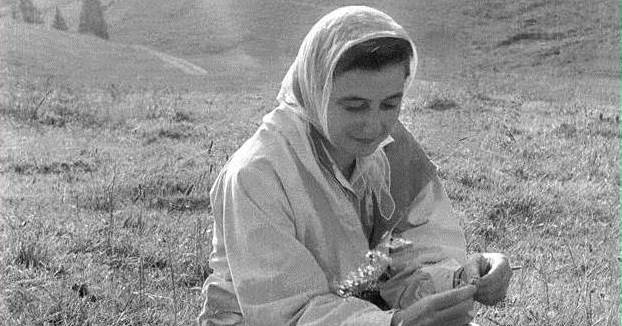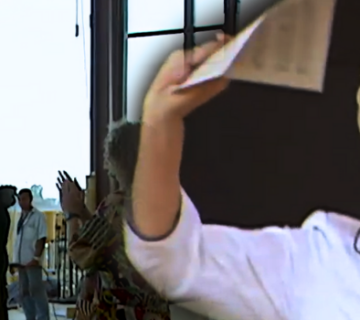 During a meeting in 2000, Chiara recalled her first “discovery” of Jesus Forsaken: “We understood something new about Him through an event that happened in January 1944. Through a particular circumstance, we came to realize that the greatest pain Jesus had suffered – and therefore the moment of His greatest love for us – was when He experienced the abandonment of the Father: ‘My God, my God, why have you forsaken me?’ (Mt 18:20). It touched us deeply. Being so young, so enthusiastic, but especially because of the grace of God, we felt urged to choose Him precisely in His abandonment, as the way to achieve our ideal of love. From that moment on we saw His face everywhere.”
During a meeting in 2000, Chiara recalled her first “discovery” of Jesus Forsaken: “We understood something new about Him through an event that happened in January 1944. Through a particular circumstance, we came to realize that the greatest pain Jesus had suffered – and therefore the moment of His greatest love for us – was when He experienced the abandonment of the Father: ‘My God, my God, why have you forsaken me?’ (Mt 18:20). It touched us deeply. Being so young, so enthusiastic, but especially because of the grace of God, we felt urged to choose Him precisely in His abandonment, as the way to achieve our ideal of love. From that moment on we saw His face everywhere.”
Another key moment in the understanding of this “mystery of suffering-love” was in the summer of 1949. Igino Giordani went to visit Chiara Lubich who had gone for a period of rest in the Valle di Primiero in the mountains of Trent, Italy. This small group of first followers that accompanied her was living with intensity the Gospel passage about the abandonment of Jesus. And those days in the mountains turned out to be days of such intense light that when it came time for them to leave their “little Tabor” and return to the city, Chiara quickly penned a text that has now become famous “I have only one spouse on earth, Jesus Forsaken. . . I will go through the world searching for him in every moment of my life.”
Many years later she would explain: “Right from the start we knew that there was another side to it all, that the tree had its roots. The Gospel covers you in love, but it demands everything from you as well. ‘If the grain of wheat, which falls to the ground, does not die,’ we read in John, ‘it remains alone; but if it dies, it produces much fruit’ (cf Jn 12:24). This is personified in Jesus Forsaken, and the fruit that he bore was humankind’s Redemption. Jesus Forsaken! Who had experienced within himself the separation of humankind from God and from each other, and had experienced the Father far from him, was seen by us not only in all of our personal sufferings, which were never lacking, or in the sufferings of our neighbors who often were all alone, abandoned and forgotten, but also in all the divisions, the traumas, the splits, the mutual indifference whether large or small: within families, among generations, between rich and poor, at times in the Church itself; later, among the different Churches; and then, among religions and between believers and those who have no religious faith at all.”
“But all of these lacerations,” Chiara continued, “never frightened us. Rather, for love of Jesus Forsaken, they attracted us. And he is the one who taught us how to confront them, how to live them, how to overcome them when, after the abandonment, he placed his spirit in the Father’s hands: ‘Father, into your hands I commend my spirit’ (Lk 23:46). And this is how he offered humankind the possibility of being recomposed within itself and with God, and he us showed how. He was the one who recomposed unity among us each time it was cracked. He became our only Spouse. And our life together with such a Spouse was so rich and fruitful that it pushed me to write a book, as a love letter, a song, a joyful thanksgiving song to Him.”


 Italiano
Italiano Español
Español Français
Français Português
Português




No comment